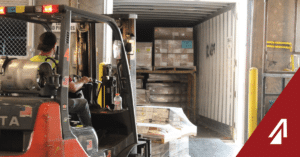Tragedy struck the world’s stage late last December when the first reported case of the Coronavirus was confirmed in Wuhan China. Since then, the death toll has climbed to over 5000 with more than 140,000 others being infected. Because it spreads so quickly and easily, many people are left uncertain about what to do and how to handle the current situation. What does this mean for the global supply chain? What steps should my business be taking? How can individuals protect themselves? Take a look at the most recent updates and answers to these questions.
How is Coronavirus Impacting the Global Supply Chain?
Right now, much of the global supply chain is moving – albeit sluggishly. According to global news leaders, Chinese factories, which have been closed due to virus concerns, are gradually returning to work. However, many chains are facing roadblocks that are difficult to get around.
For instance, travel from highly concentrated virus areas, like China and Europe, will have severe restrictions for coming weeks and months. But, appropriately screened freight will still be able to move – according to a statement by President Trump on March 11.
The biggest concern remains how easy the virus is to spread. According to the Center for Disease Control, CDC, “The virus is thought to spread mainly between people who are in close contact with one another (within about 6 feet) through respiratory droplets produced when an infected person coughs or sneezes. It also may be possible that a person can get COVID-19 by touching a surface or object that has the virus on it and then touching their own mouth, nose, or possibly their eyes, but this is not thought to be the main way the virus spreads.” This makes manufacturing facilities hot zones for virus activity. So, as global governments monitor the virus, more and more factories will come on line and return to production.
There is hope, however. Many nations, like South Korea, are reporting a slow down in daily infections. South Korean President Moon Jae-in noted March 9th his country’s “slowing trend” of new infections but warned: “We should not be complacent at all.” South Korea was one of the hardest hit countries outside of China, Italy, and Iran. South Korean Centers for Disease Control and Prevention attribute this success to mass testing, improved public communication and the use of advanced technology. As more success takes place, global supply chains will begin moving again.
Do you feel chaos in your supply chain? We want to make it efficient!: LEARN MORE
What Steps Should Businesses Be Taking?
According to the CDC there are six immediate steps businesses should be taking to help reduce how much the virus spreads.
Actively Encourage Sick Employees to Stay Home
Overall, the CDC recommends that any employee with acute respiratory illness should stay at home until they are free of fever for more than 24 hours. They also recommend employers be understanding and flexible with sick leave and make employees aware of the sick leave policy.
Separate Sick Employees
This means to send employees with acute respiratory illness symptoms home right away.
Emphasize Staying Home When Sick, Respiratory Etiquette, and Hand Hygiene by All Employees
Place warnings in clearly visible locations and provide necessary hygiene articles in the building – e.g. soap and water and alcohol-based sanitizers.
Perform Routine Environmental Cleaning
Clean all frequently touched surfaces like workstations, countertops, and doorknobs.
Advise Employees Before Travelling to Take Certain Steps
Check the latest updates on the CDC’s Traveler’s Health Notices site.
Be Vigilant If You Have Sick Family Members
What Steps Should Individuals Be Taking?
The CDC recommends these measures to individuals:
• Avoid close contact with people who are sick.
• Avoid touching your eyes, nose, and mouth with unwashed hands.
• Wash your hands often with soap and water for at least 20 seconds. Use an alcohol-based hand sanitizer that contains at least 60% alcohol if soap and water are not available.
• Stay home when you are sick.
• Cover your cough or sneeze with a tissue, then throw the tissue in the trash.
• Clean and disinfect frequently touched objects and surfaces.
The coronavirus is certainly something to be cautious of and it presents some real challenges to the global supply chain. However, as more people become aware of the risks, and take steps to prevent those risks, the overall threat decreases. As the threat decreases, the global supply chain can return to normal.
Need help with your global supply chain? Talk with us about your logistics needs! LEARN MORE!



